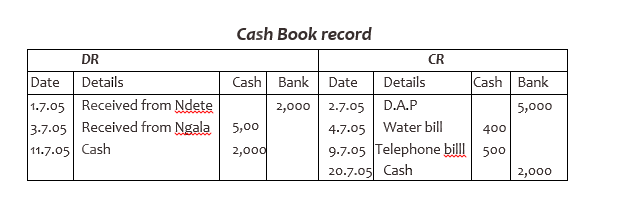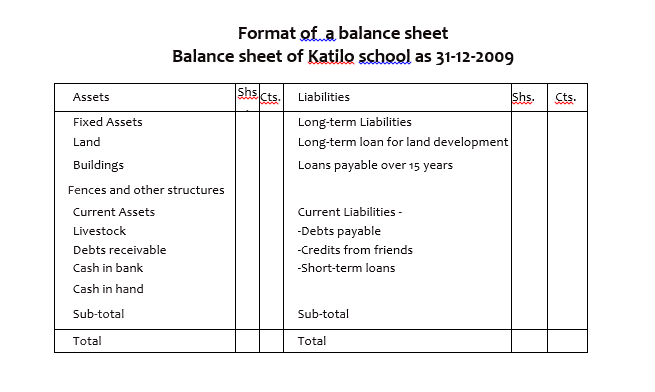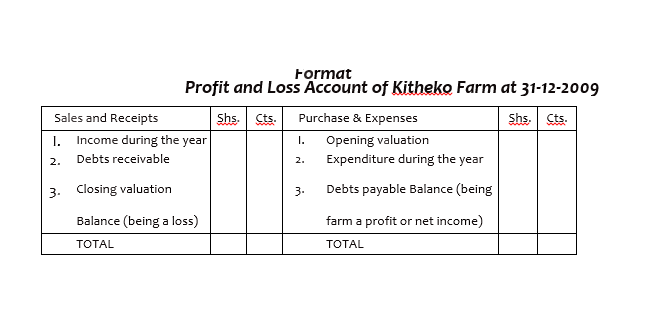Introduction
- Financial and physical records if accurately kept in the farm serve as very important tools in decision-making
- The records are kept in several books and statements as follows:
Financial Documents
They include:
- Invoices.
- Receipts.
- Delivery notes
- Purchase records.
An Invoice
- This is a document issued by the seller to the buyer for goods taken on credit, and payment to be done later.
- The original is given to the buyer and duplicate retained by seller.
The invoice shows the following:
- The buyer and seller.
- Date of transaction.
- Amount involved.
- Invoice number.
A Receipt
- This is a document issued by the seller to the buyer when cash payment for goods delivered is made.
It shows the following:
- The buyer and the seller.
- Date of transaction.
- Amount involved.
- Serial number
Delivery Note
- It is a document which shows that the goods have been delivered.
- The receiver verifies the goods and then signs on the delivery note.
Features:
The delivery note shows the following:
- Goods delivered as per order.
- Quality or condition.
- People involved in the transaction.
- Date of delivery.
Journal:
- It is a book of first entry showing a record of all business transactions arranged in the order in which they occur.
- Its pages are divided vertically into five sectio
- The information is posted to the ledger
Inventory:
- This is a list of all the possession/assets item by item and their market value.
- Such items are land, livestock, tools and equipment and crops in the store.
- Valuation is an estimation of the value of each asset or item, based on market price or cost of production.
Local Purchase Order:
- Issued by the purchasing officer of the supplier for example school.
- It shows people involved in the transaction, types and amounts of goods ordered and dates.
- It should be written and signed by the authorised officer.
- It is written in duplicate and the original is given to the supplier.
Financial Books
Ledger:
- Is a book which contains individual accounts.
- It is a principle book of accounts in which entries contained in all the other books are enter
- It is a storehouse of all the transactions.
- Each page is numbered and vertically divided into two equal parts namely credit and debit.
- Each part is further sub-divided into four sections.
Cash Book:
- It is a book where transactions involving cash or cheque payments are record
- It involves cash or cheque payments and receipt
- It is divided into two parts – debit and credit side.
- All the receipts of cash or cheque are recorded on the debit and all payments are recorded on the credit side.
Example: Enter the following entries in the cash book.
- 1.05 -Received shs.2,000 from Ndete by cheque.
- 7.05-Bought D.A.P. fertilizer and paid cheque of shs. 5,000.
- 7.05-Received shs.5,000 cash from Ngala.
- 4.7.05 -Paid water bill for shs 400 in cas
- 7.05-Paid telephone bill of 1,500 by cheque.
- 11.05 -Deposited shs.2,000 in the bank.
- 20.7.05 -Withdrew shs.2,000 from the bank for home use.

Financial Statements
Cash Account Sheet
- It involves the recording of sales and receipts, purchases and ex
- Each sale or purchase is entered twice, once in the total column and once in the analysis column.
- The sum of all the entries in the total column should always equal the sum of the entries in all the other columns.
- The cash analysis account sheet is given above.
The Balance Sheet
- It is a financial statement of assets and liabilities recorded on a given date.
- It shows the financial position of a farm business at a glance (snapshot).
Assets are items owned by the farmer,
These include:
- Property (money, goods and buildings).
- Debts receivable from other people.
- Goods and services paid for in advance.
Assets can be divided into two:
- Fixed assets: assets of permanent nature and not easily converted into cash.
- Current assets: assets which can be easily converted into cash.
- Liabilities are claims to the farmer’s property such as bank overdraft and debts payab
They are divided into:
- Current liabilities – debts which must be paid within a short time.
- Long term liabilities – debts which are payable over many years or over a long period.
Profit and Loss Account
- Prepared at the end of a calendar year.
- It is a final account which summarises the sale and receipts (income flowing in the business) and the purchases and expenses (flowing out of the business).
Note: If assets are more than liabilities then the balancing factor is net capital (in the liability side) hence the farm business is said to be solvent.
- If the liabilities are more than the assets, then the balancing factor is a loss (in the asset side) hence the farm business is insolvent.
- To calculate profit or loss, account, valuation is done by having an inventory of all the assets.
- Valuation of the assets is determined by market price and cost of production for machinery and buildings as depreciation factor, is attached.


